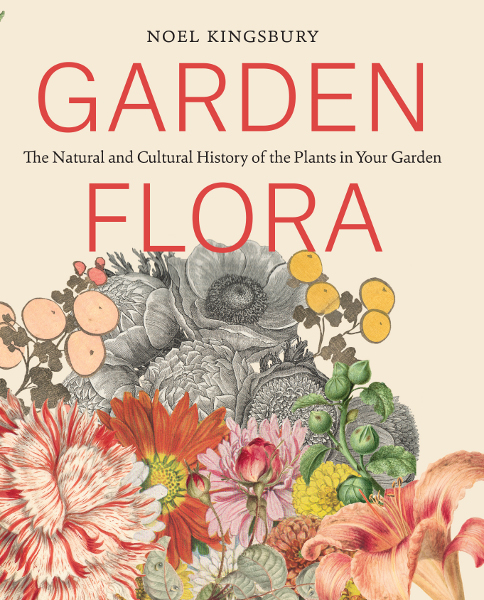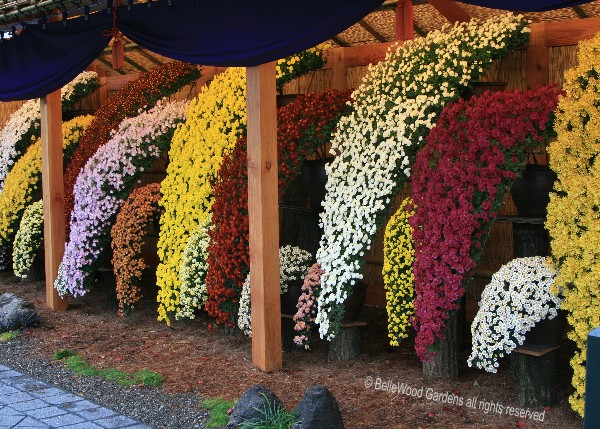
.
If you have any comments, observations, or questions about what you read here, remember you can always Contact Me
All content included on this site such as text, graphics and images is protected by U.S and international copyright law.
The compilation of all content on this site is the exclusive property of the site copyright holder.
What's a Flora? According to Wikipedia, "Flora is the plant life occurring in a particular region or time, generally the naturally occurring or indigenous - native plant life." Looking on my bookshelves there are several flora of the Rocky Mountains, Utah, and other places I've visited. Like most people, though, I'm home more than I'm away. So what I need is a flora for my garden. And now there is one.

Garden Flora, The Natural and Cultural History of the Plants in Your Garden
written by Noel Kingsbury
I could, I suppose, just go flipping through the alphabetical list of plants that form the main body of the book and seek out those I am growing, or want to grow, or saw growing in someone else's garden. The introduction with its hortatory "Read this first!!" is important to read from start to end.
In a concise 20 pages the author presents a diversity of informative tidbits. He begins with The Genus, the naming of plants. Plant growth habit, family relationships, genetic origin - accurate but not dustily pedantic, providing you, the reader, a lucid explanation of terms such as cultivars and taxa, lianas and geophyte. This section is handsomely laid out, with vertical illustrations running along each right hand page, a combination of photograph, colored and also black and white illustrations. I cannot say they have any direct correlation to the text but they are pleasing to the eye. Some left hand pages also have illustrations - here a mountain scree slope, there drawings by Gertrude Jekyll of campanula.
As this introductory section moves on it delivers some good, useful information for gardeners. The Ecology section, for example, mentions Competitors, plants that fill space and reduce maintenance but beware lest "they become a little too enthusiastic." Onward, to the final portion, History in Cultivation interestingly divided into Before Glass which briskly moves through China, medieval Europe, Ottoman empire, and Japan, then happily zipps through the 18th through 20th century After Glass period with a focus on Europe and North America.
Not a how-to-cultivate plants in your garden, nor offering suggestions on garden design, "Garden Flora" is more of a leisurely stroll through a garden's flowers. The main portion of the book, arranged alphabetically from Abutilon to Zinnia, takes us briefly into the botany and then into the horticultural history of well over 100 herbaceous perennials, a few annuals, some vines and shrubs. This encyclopedic portion of the book is amenable to dipping and flipping. Like me, you'll probably seek the plants most familiar and favorites: hellebores, hemerocallis, and hosta, for example. And then examine less well know genera. In our enthusiastic discovery of ornamental plants we might wish to cultivate it is easy to forget that others have walked down this garden path ahead of us. It is fascinating to learn, for example, that Napoleon's conquering armies sent any interesting roses they discovered back to the Empress Josephine for her garden, Malmaison, in France.
Most entries have but one or two pages. If you'd like to know how magnolias arrived in gardens from their native homes in Asia and America, there's an informative two page spread. Primroses, harbingers of Spring, are discussed by geographical origins: European species such as polyanthus and auricula and auricula, for example before discussing Asian species Primula japonica and P. sieboldii. I was surprised that there was barely a mention of the auricula theater so popular in England in the early 1800s.

How it was decided which plants got how much in the way of layout, text, and illustration(s) is somewhat puzzling. Author's choice, no doubt, but rather uneven. Greenhouse orchids, for example, are given a 9 page spread. Conifers have but one page, Rodgersia even less space, neither have illustrations.
Rhododendrons for example, and chrysanthemums, have multi-page entries. The thorough text for the latter begins with a brief discussion of its taxonomic history, a paragraph on its medicinal properties, traditional cultivation in China and Japan, and cultivation in Britain, France, and America. Illustrations from 19th century Japanese prints, a mid 20th century water color of a diversity of chrysanthemums for a German garden perennial picture book, and a two half-page photographic illustrations of chrysanthemums trained in the classic traditional Japanese style at the New York Botanical Garden.

Illustrations cover a broad array from reproductions of oil paintings, watercolors, and engravings, Japanese wood block prints, catalog illustrations, photographs from plant portraits to double page spread of plants in the wild, many in color and some black & white.
An attractive book to widen your knowledge of how these plants came to be in our gardens.
A review copy of this book was provided by the publisher.
Published by Timber Press, Portland, Oregon, 2016 ISBN 13:978-1-60469-565-6 Hardcover, $40.00
Back to Top
Back to Book Reviews 2017
Back to January 2017
Back to the main Diary Page